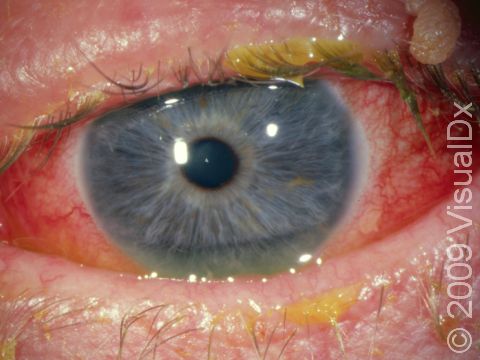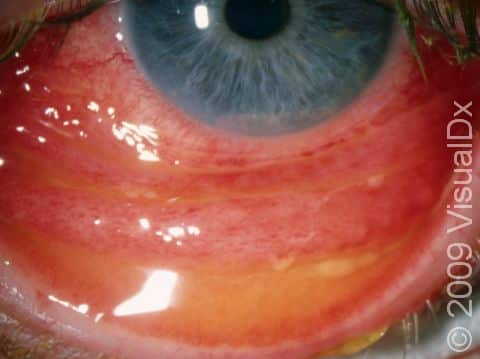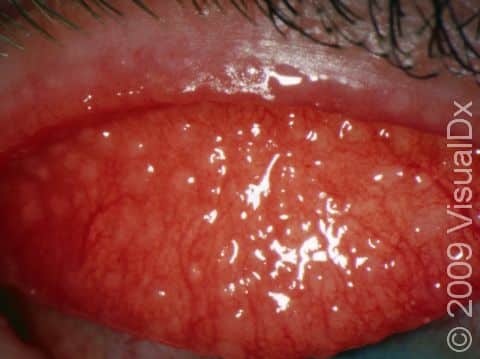Pink Eye (Conjunctivitis)
Conjunctivitis, commonly known as pink eye, is inflammation of the tissue on the surface of the eye and/or the inside lining of the eyelids. The most common causes of pink eye include:
- Infection (viruses, bacteria).
- Inflammatory causes such as chemicals, fumes, dust, and debris.
- Allergies.
- Injuries.
- Eye-to-genital contact with someone infected with a sexually transmitted infection (STI) such as chlamydia, gonorrhea, or herpes.
Who's At Risk?
Pink eye is very common all over the world. Nearly all people have it at one time or another. Pink eye is often caused by an irritant in the eye(s) or infection passed along from someone else. When pink eye is caused by an infection, it can spread easily from person to person. People of any age, sex, or race / ethnicity can become infected with pink eye.
Signs & Symptoms
One or both eyes appear pink or red and irritated. There may be a discharge (tears, mucus, or pus), as well as sensitivity to bright light. There may be burning, itching, a sandy or gravely feeling, and even pain in the eyes. The eyelids may be stuck together in the morning upon waking. Vision may be blurred by the mucus or excess tears in the eyes.
Self-Care Guidelines
If you have signs or symptoms of pink eye:
- Wash your hands frequently to avoid contaminating others or reinfecting yourself.
- Avoid sharing personal care items such as towels and contact lens products.
- Take a break from wearing contact lenses, if applicable. Once your pink eye has gone away, either throw away your contact lenses or clean them thoroughly before wearing them again.
- Apply cold, wet compresses, especially if the eyes are itchy, swollen, painful, or there is discharge from the eyes.
- Wash the eyelids and very gently remove debris; do not pick at it.
- Avoid rubbing the eyes, as this can further irritation or cause the problem to spread.
Most over-the-counter medications will soothe the eye, and because most pink eye is viral and will go away on its own within 7-10 days, no other medications are usually needed.
To help prevent pink eye:
- Follow good hygiene, including washing your hands regularly or using alcohol-based hand rubs.
- Avoid sharing personal items with someone who has pink eye.
- Use proper eye protection when in conditions that might increase your risk, such as working in dusty or fume-filled areas.
- Avoid allergic influences that might affect you, such as perfumes, weeds, and mold. For example, shut the window during allergy season.
- Avoid rubbing the eyes, especially if you have a cold or upper respiratory infection.
Treatments
Treatment of pink eye depends on the cause of the conjunctivitis (eg, virus, bacterium, allergy). No treatment may be necessary. However, a topical antibiotic, anti-inflammatory, and/or antiallergy drops may be prescribed by your medical professional. If your pink eye comes back, you may be prescribed an oral antibiotic. If the pink eye is related to another disease elsewhere in the body (such as a respiratory disease or an STI), that disease will require treatment as well.
Visit Urgency
See a medical professional if you have symptoms of pink eye and:
- Pain is increasing.
- Vision is worsening.
- There is blistering and/or a rash on the eyelids.
- Swelling is increasing.
- There is a lot of discharge from the eye.
- The condition does not get better within a week.
If you have thick, pus-filled discharge, seek emergency medical care, as this may be from a possible blinding form of pink eye.
Trusted Links
References
Duncan JL, Parikh NB, Seitzman GD. Conjunctivitis. In: Papadakis MA, McPhee SJ, Rabow MW, McQuaid KR, Gandhi M, eds. Current Medical Diagnosis & Treatment 2024. McGraw Hill; 2024.
Horton JC. Disorders of the eye. In: Loscalzo J, Fauci AS, Kasper DL, Hauser SL, Longo DL, Jameson JL, eds. Harrison’s Principles of Internal Medicine. 21st ed. McGraw Hill; 2022.
National Center for Immunization and Respiratory Diseases (NCIRD), Division of Viral Diseases. Conjunctivitis (pink eye). Centers for Disease Control and Prevention. https://www.cdc.gov/conjunctivitis/index.html. Updated 2021 Nov 12.
Last modified on June 20th, 2024 at 7:44 am

Not sure what to look for?
Try our new Rash and Skin Condition Finder


